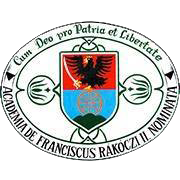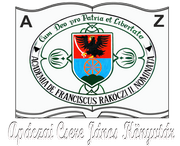Please use this identifier to cite or link to this item:
https://dspace.kmf.uz.ua/jspui/handle/123456789/5044| Title: | Коротка історія дистанційного навчання і перспективи його майбутнього |
| Other Titles: | A Brief History of Distance Education and Perspectives of its Future |
| Authors: | Густі Ілона Лехнер Ілона Барань Адальберт Huszti Ilona Lechner Ilona Bárány Béla Ilona Lekhner Baran Adalbert |
| Keywords: | відкритий університет;гейміфікація;дистанційне навчання;«конус навчання» Едгара Дейла;масовий відкритий онлайн-курс (MOOC);Роберт Ганьє;система управління навчанням (LMS);distance learning;Edgar Dale’s ‘Cone of Experience’;gamification;learning management system (LMS);massive open online course (MOOC);open university;Robert Gagné |
| Issue Date: | 2025 |
| Publisher: | Харківський національний університет імені В. Н. Каразіна |
| Type: | dc.type.article |
| Citation: | In Вісник Харківського національного університету імені В. Н. Каразіна. 2025. Випуск 101. с. 116-124. |
| Series/Report no.: | ;Випуск 101. |
| Abstract: | Abstract. Distance learning has undergone significant evolution since its inception in the mid-20th century, responding to technological progress, pedagogical innovations, and societal needs. Its relevance lies in providing flexible and accessible educational opportunities for students around the world. The purpose of the study is to trace the evolution of distance learning from its origins to the present, identify key factors that have influenced its development, and outline potential directions for its future development. The research objectives are to analyse the historical development of distance learning, identify key technological, pedagogical, and social factors that have influenced its evolution, determine the contribution of specialists and institutions to the development of distance learning, and outline potential directions for the development of distance learning in the future. Research results: 1. Key stages in the development of distance learning are identified, starting from training methods for military personnel in the 1940s to modern online platforms and MOOCs. 2. The impact of technological progress (personal computers, the Internet, Web 2.0) on expanding the capabilities and accessibility of distance learning is established. 3. The role of pedagogical innovations and changing societal needs in shaping modern models of distance learning is determined. 4. The current state of distance learning and its potential future directions are presented. Conclusions. Distance learning has gone from correspondence courses to interactive online platforms, significantly expanding access to education. Technological progress, pedagogical innovations, and changes in social needs are the driving forces of its evolution. Distance learning has significant potential for development and will become an integral part of the educational process of the future. Резюме. Дистанційне навчання зазнало значної еволюції з моменту свого зародження в середині ХХ століття, реагуючи на технологічний прогрес, педагогічні інновації та потреби суспільства. Його актуальність полягає в забезпеченні гнучких та доступних освітніх можливостей для учнів і студентів у всьому світі. Мета дослідження – простежити еволюцію дистанційного навчання від його витоків до сьогодення, визначити ключові фактори, що вплинули на його розвиток, та окреслити потенційні напрямки його розвитку в майбутньому. Завдання дослідження: проаналізувати історичний розвиток дистанційного навчання, визначити ключові технологічні, педагогічні та соціальні фактори, що вплинули на еволюцію дистанційного навчання, дослідити роль технологій у формуванні дистанційного навчання, визначити внесок фахівців та інституцій у розвиток дистанційного навчання, окреслити потенційні напрямки розвитку дистанційного навчання в майбутньому. Результати дослідження. 1. Виявлено головні етапи розвитку дистанційного навчання, починаючи з методів навчання для військовослужбовців у 1940-х роках до сучасних онлайн-платформ та МBОK. 2. Встановлено вплив технологічного прогресу (персональні комп’ютери, Інтернет, Web 2.0) на розширення можливостей та доступності дистанційного навчання. 3. Визначено роль педагогічних інновацій та зміни потреб суспільства у формуванні сучасних моделей дистанційного навчання. 4. Представлено поточний стан дистанційного навчання та його потенційні майбутні напрямки. Висновки. Дистанційне навчання пройшло шлях від заочних курсів до інтерактивних онлайн-платформ, значно розширивши доступ до освіти. Технологічний прогрес, педагогічні інновації та зміни в суспільних потребах є рушійними силами його еволюції. Дистанційне навчання має значний потенціал для розвитку та стане невід’ємною частиною освітнього процесу майбутнього. |
| Description: | Редколегія: https://periodicals.karazin.ua/foreignphilology/about/editorialTeam Зміст: https://periodicals.karazin.ua/foreignphilology/issue/view/1577 |
| URI: | https://dspace.kmf.uz.ua/jspui/handle/123456789/5044 |
| ISSN: | 2786-5312 (Print) 2786-5320 (Online) |
| metadata.dc.rights.uri: | http://creativecommons.org/licenses/by-nc-nd/3.0/us/ |
| Appears in Collections: | Bárány Béla Huszti Ilona Lechner Ilona |
Files in This Item:
| File | Description | Size | Format | |
|---|---|---|---|---|
| Z_Huszti_Lekhner_Baran_2025_ukr.pdf | In Вісник Харківського національного університету імені В. Н. Каразіна. 2025. Випуск 101. с. 116-124. | 819.85 kB | Adobe PDF | View/Open |
This item is licensed under a Creative Commons License





